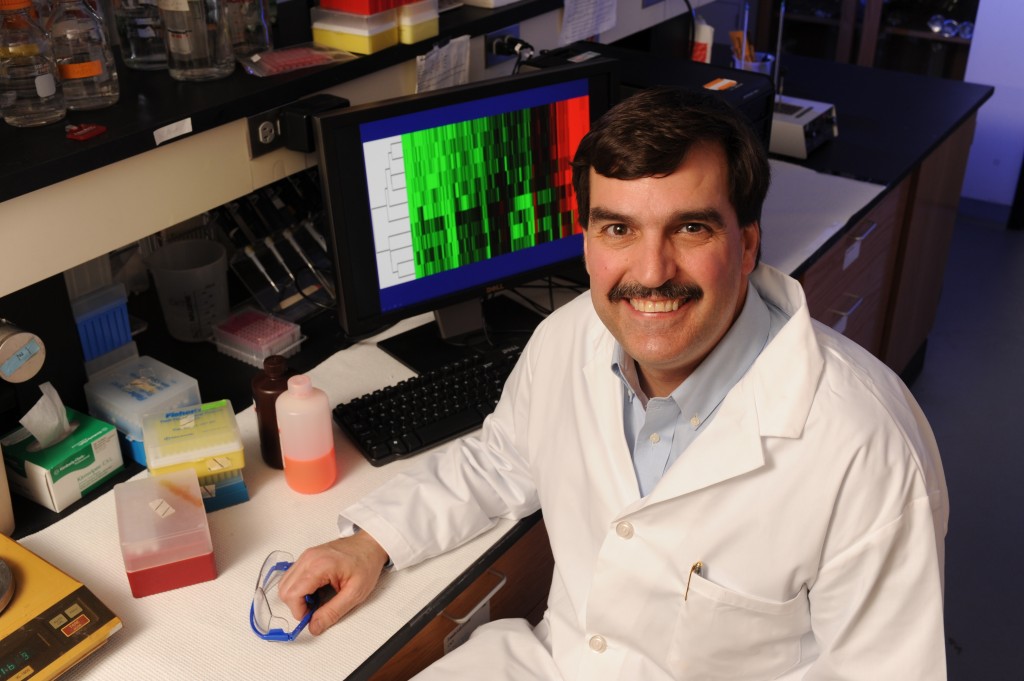
Preventing The Spread Of Salmonella
In an effort to improve animal health and food safety, Chris Tuggle and colleagues are finding new ways to identify animals harboring Salmonella.
“We are developing a blood test to identify animals that shed the least amount of Salmonella into the environment,” says Tuggle.
Pigs can contract and carry salmonella without showing any symptoms. Infected animals shed the bacteria in their manure, which often is used to fertilize crops.
Tuggle, professor of animal science, and his research team examine the genetic makeup of pigs and sample blood and fecal matter for evidence of salmonella. Then they look for relationships between the expression of genes in blood and the level of Salmonella shed by the pig.
Their findings have identified a gene expression signature, or classifier, that can predict the level to which an animal will carry or transmit Salmonella. These results can help weed out pigs who are salmonella “shedders” from swine herds through traditional animal breeding methods or manipulation of the guilty genes.
“Salmonella is present in more than half of U.S. swine herds. It results in more than $100 million in annual production losses,” says Tuggle. “But more importantly, what’s driving this research is the food safety issue. There are 1.4 million cases of salmonellosis in U.S. annually. Our results have the potential to not only decrease Salmonella contamination in pork, but also on sprouts, peppers or any other vegetable crop for which manure is used as fertilizer.”
Preventing the occurrence or spread of Salmonella in swine herds through genetic selection is also a way to use less antibiotics in pork – addressing new regulations, consumer trends and decreased antibiotic effectiveness.
“It takes a collaborative effort to approach this,” says Tuggle. “I work with animal scientists, statisticians, computer scientists and immunologists.”



